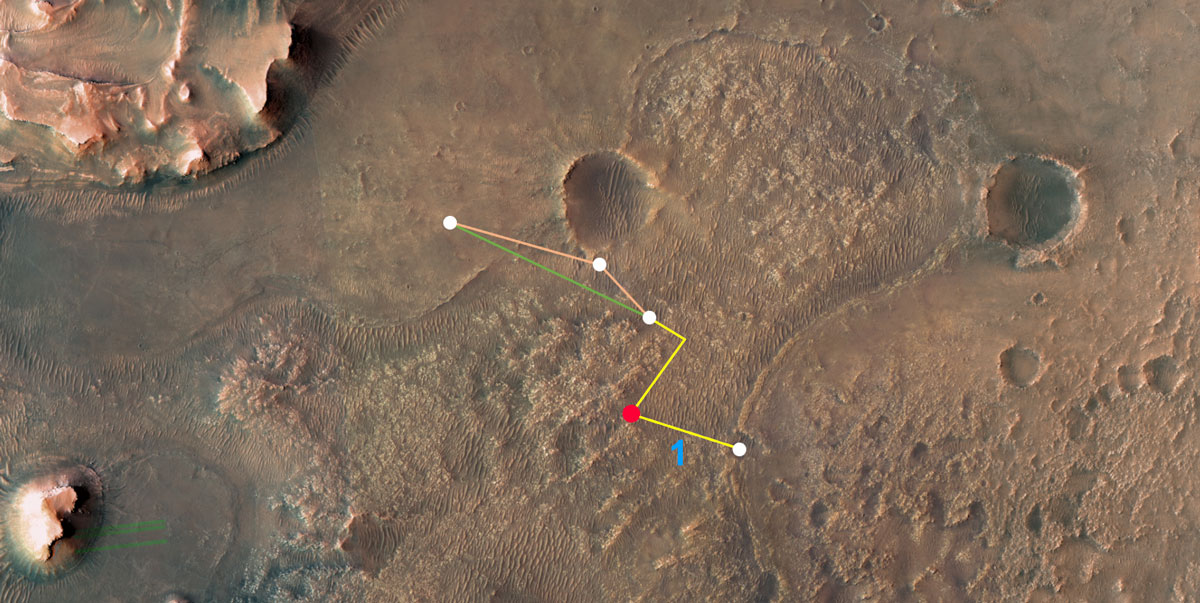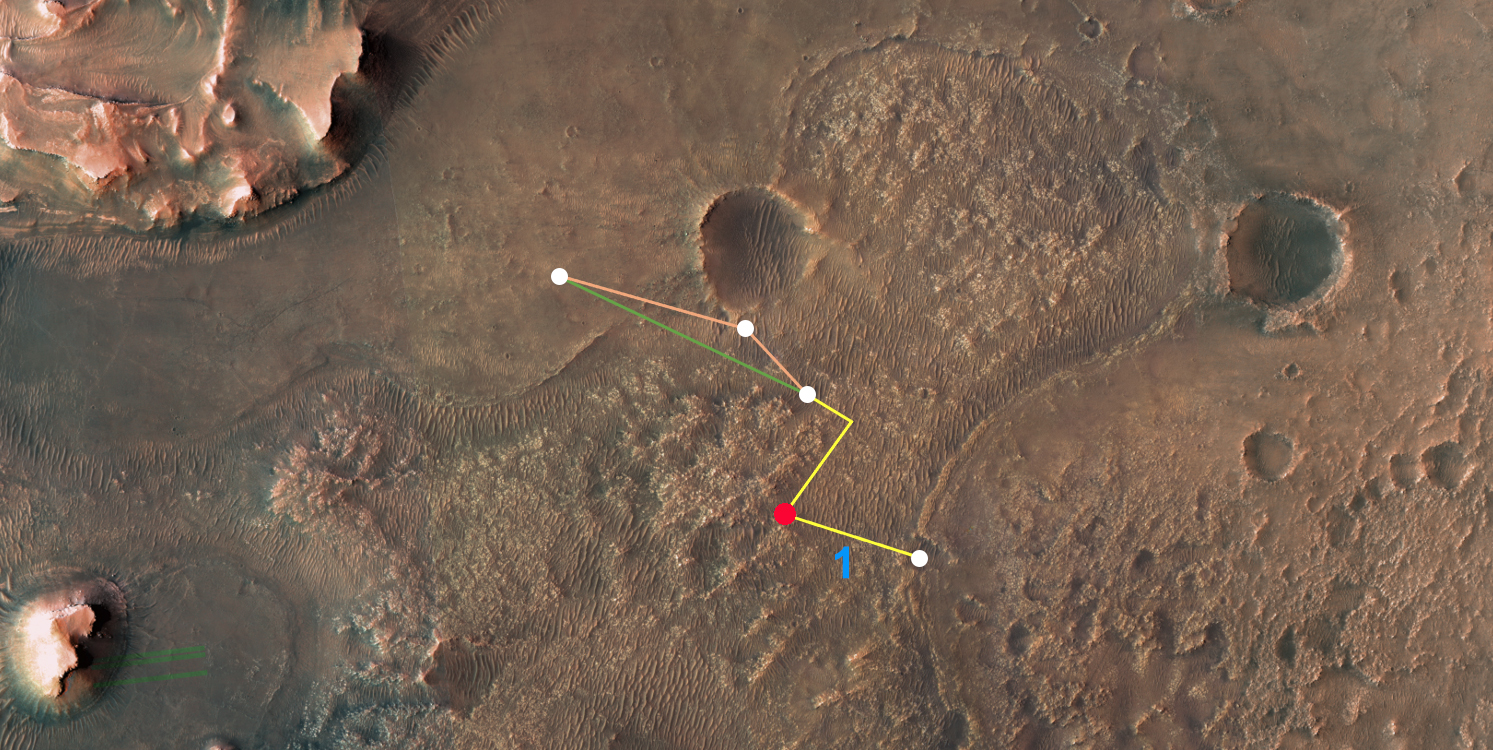Ingenuity Flights to the Delta

| Credit | NASA/JPL-Caltech/University of Arizona/USGS |
|---|---|
| Language |
|
This annotated overhead image from NASA’s Mars Reconnaissance Orbiter (MRO) depicts the multiple flights – and two different routes – the agency’s Ingenuity Mars Helicopter could take on its way to Jezero Crater’s delta. The location of Ingenuity as of March 14, 2022, is indicated by the red dot. This map is made using images from MRO’s High Resolution Imaging Experiment (HiRISE) camera.
The first flight in this series (indicated by the number 1 in blue) occurred on March 10, 2022. After the next flight – which includes a sharp bend in the course to avoid a large hill – the helicopter team will consider which of two routes to take. The first option requires two flights to reach the base of the delta. The second option is more direct, necessitating only one final flight to reach the same location.
The University of Arizona, in Tucson, operates HiRISE, which was built by Ball Aerospace & Technologies Corp., in Boulder, Colorado. NASA’s Jet Propulsion Laboratory, a division of Caltech in Pasadena, California, manages the Mars Reconnaissance Orbiter Project for NASA’s Science Mission Directorate in Washington.
The Ingenuity Mars Helicopter was built by JPL, which also manages the technology demonstration project for NASA Headquarters. It is supported by NASA’s Science, Aeronautics Research, and Space Technology mission directorates. NASA’s Ames Research Center in California’s Silicon Valley, and NASA’s Langley Research Center in Hampton, Virginia, provided significant flight performance analysis and technical assistance during Ingenuity’s development. AeroVironment Inc., Qualcomm, and SolAero also provided design assistance and major vehicle components. Lockheed Martin Space designed and manufactured the Mars Helicopter Delivery System.

